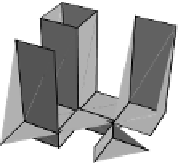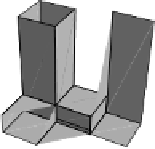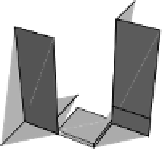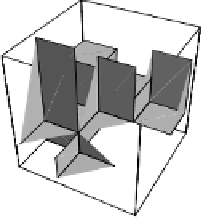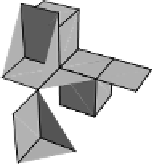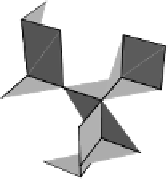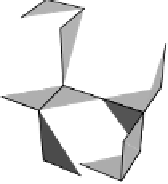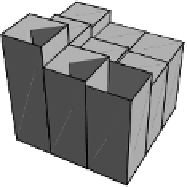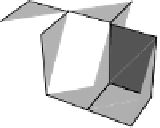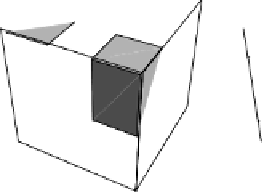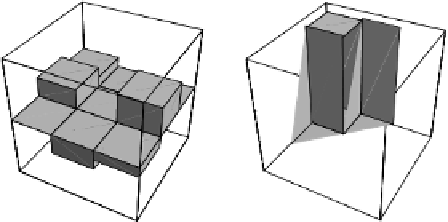Cryptography Reference
In-Depth Information
(a)
0.4
0.2
0.4
0.3
0.2
0
0.2
0
+
0.1
-0.2
0
-
0
-
0
+
(b)
0.4
0.4
0.3
0.2
0.2
0
0.2
0.1
0
-0.2
0
(c)
0.3
0.2
0.2
0.2
0
0
0.1
-0.2
-0.2
0
Figure 3.8
Results of quantum state tomography applied to three different re-
motely prepared states of Bob's qutrits: (a) 0
.
68
|
0
+
0
.
71
|
1
−
0
.
14
|−
1
; (b) 0
.
65
|
0
+
0
.
53 exp
(
−
i
0
.
26
π)
|
1
+
0
.
55 exp
(
−
i
0
.
6
π)
|−
1
;
(c)
0
.
58
|
0
+
0
.
58 exp
(
−
i
0
.
05
π)
|
1
+
0
. Left and middle panels show real and imaginary parts of
the reconstructed density matrices; right panels show the absolute values of those
elements for better comparison of how large are the contributions of the three basic
states. From the results it is shown that Alice can control both the relative amplitudes
and the phases of the sent states.
.
58 exp
(
−
i
0
.
89
π)
|−
1
The use of entanglement provides a superior approach to quantum cryp-
tography and was first proposed by Ekert [67]. One of the main conceptional
advantages over single-photon quantum cryptography is the inherent ran-
domness in the results of a quantum-mechanical measurement on an en-
tangled system leading to purely random keys. Furthermore, the use of en-
tangled pairs eliminates the need for a deterministic single photon source,
because a pure entangled photon state consists, by definition, of exactly two
photons that are sent to different recipients. Multiple-pair emissions are in-
herently rejected by the protocol, in contrast to the faint-pulse case, where a


